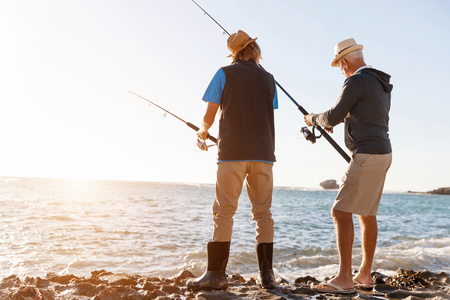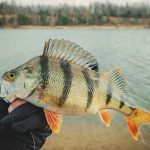1. Understanding Baitcasting Reels
If youre serious about fishing—whether youre casting for bass in a southern lake or targeting pike up north—learning how to use a baitcasting reel can be a game changer. Baitcasting reels offer precision, control, and power that spinning reels just cant match in certain situations. This section breaks down what baitcasting reels are, how they work, and when you should choose one over other types of reels.
What Is a Baitcasting Reel?
A baitcasting reel is a type of fishing reel that sits on top of the rod and uses a rotating spool to release and retrieve line. Unlike spinning reels where the spool stays stationary, the spool on a baitcaster spins as you cast, allowing for longer and more accurate throws when used correctly.
Key Components of a Baitcasting Reel
Understanding the parts of your baitcaster helps you get the most out of it. Heres a breakdown of the essential components:
| Component | Description |
|---|---|
| Spool | Holds the fishing line; rotates during casting and retrieval. |
| Brake System | Controls the speed of the spool during casting to prevent backlash (line tangling). |
| Drag System | Applies resistance when a fish pulls on the line; helps prevent break-offs. |
| Handle | Used to retrieve the line by turning the spool back in. |
| Tension Knob | Fine-tunes how freely the spool spins; crucial for avoiding bird’s nests. |
| Line Guide | Makes sure the line winds evenly onto the spool during retrieval. |
When to Use a Baitcaster Instead of a Spinning Reel
Baitcasters shine in specific fishing scenarios where control and power matter most. Heres when youd want to opt for one:
| Fishing Situation | Why Use a Baitcaster? |
|---|---|
| Casting heavy lures or baits (e.g., crankbaits, jigs) | Baitcasters handle heavier lines and lures with ease. |
| Targeting large, strong fish like bass or muskie | The gear ratio and drag system provide better power and control. |
| Precision casting near cover (docks, weeds, structure) | Baitcasters allow for accurate placement with minimal splash. |
| Punching through thick vegetation or flipping heavy cover | The strong build and torque make it ideal for tough environments. |
Baitcaster Learning Curve: What to Expect
If youre new to baitcasting, be prepared for a bit of trial and error. Unlike spinning reels, which are more forgiving, baitcasters require practice to master—especially when it comes to controlling spool speed during casts. The good news? Once you get the hang of it, you’ll wonder how you ever fished without one.
Pro Tip:
Start with heavier lures and thicker lines while practicing—it makes it easier to control your cast and reduces backlash risks. As your skills improve, you can fine-tune your setup for lighter presentations.
Baitcasting might seem intimidating at first glance, but understanding how these reels work—and when to use them—opens up a whole new level of angling potential. Whether youre just starting out or looking to refine your technique, mastering baitcasters is well worth the effort.
2. Setting Up Your Baitcasting Combo
Getting your baitcasting setup right is the first big step toward casting like a pro. Whether youre just starting out or have some experience under your belt, having the correct rod, reel, and line combination makes a huge difference in performance. Lets walk through how to pair each component for different fishing styles and situations.
Choosing the Right Baitcasting Reel
Baitcasting reels come in various gear ratios, which determine how fast you can retrieve your lure. Heres a simple breakdown:
| Gear Ratio | Retrieve Speed | Best For |
|---|---|---|
| 5.4:1 – 6.4:1 | Slow to Medium | Crankbaits, Spinnerbaits, Deep Diving Lures |
| 6.4:1 – 7.1:1 | Medium | All-Purpose Fishing, Soft Plastics, Jigs |
| 7.1:1 and up | Fast | Punching, Flipping, Topwater Lures, Burning Baits |
Selecting the Right Rod for Your Reel
The rod you pair with your baitcaster should match the type of fishing youre planning to do. Two key factors to consider are rod power and action:
Rod Power
- Light: Best for finesse fishing and smaller species.
- Medium: Great all-around choice for bass and similar-sized fish.
- Heavy: Ideal for big lures, thick cover, and strong fish.
Rod Action
- Fast Action: Flexes at the tip; better sensitivity and hook-setting power. Perfect for jigs and worms.
- Moderate Action: Flexes in the middle; ideal for crankbaits and treble hook lures.
- Slow Action: Flexes throughout the rod; used less often but good for live bait or light line techniques.
Picking the Right Fishing Line
Your line ties everything together—literally! Each type of line has its own strengths:
| Line Type | Main Benefits | Best Used For |
|---|---|---|
| Braided Line | No stretch, high strength, great sensitivity | Punching heavy cover, topwater baits, long casts |
| Fluorocarbon Line | Abrasion-resistant, low visibility underwater | Sensitive presentations like jigs or soft plastics |
| Monofilament Line | Slight stretch, easy handling, floats well | Treble-hook baits like crankbaits or beginner setups |
A Quick Setup Example for Beginners:
- Baitcasting Reel: 6.4:1 gear ratio (versatile)
- Baitcasting Rod: Medium power / Fast action (good all-around combo)
- Line: 12-15 lb fluorocarbon (sensitive but strong enough for most bass fishing)
Tuning Tip:
If youre new to baitcasters, start with a heavier lure (like a ½ oz jig or crankbait) and spool your reel with monofilament—it’s more forgiving when learning how to cast without backlash.
This setup will give you a solid foundation whether youre fishing from shore, kayak, or boat. As you gain experience, you can fine-tune your gear based on specific techniques or target species.

3. Casting Techniques and Adjustments
Baitcasting reels can be a game-changer for anglers, but learning how to cast properly is key to avoiding frustrating backlashes and getting accurate throws. Let’s break down the basic techniques and adjustments you’ll need to master the mechanics of baitcasting.
Thumb Control: Your First Line of Defense
Your thumb plays a crucial role in baitcasting. It controls the spool during the cast and helps prevent backlash. When you press the thumb bar to release the line, keep your thumb lightly on the spool. As your lure flies through the air, use your thumb to gently feather the spool. Just before the lure hits the water, press down slightly harder to stop the spool completely. With practice, this becomes second nature.
Spool Tension Knob: Fine-Tune for Lure Weight
The spool tension knob is usually located next to the handle side of your reel. This adjustment helps control how freely the spool spins based on your lures weight.
How to Set It:
- Tie on your lure and hold your rod horizontally.
- Press the thumb bar to let the lure drop.
- Adjust the tension knob so that your lure falls slowly and stops when it hits the ground without causing the spool to over-spin.
Spool Tension Settings by Lure Type:
| Lure Type | Recommended Tension |
|---|---|
| Lightweight (e.g., soft plastics) | Tighter tension |
| Medium weight (e.g., crankbaits) | Moderate tension |
| Heavy lures (e.g., swimbaits) | Looser tension |
Brake Systems: Controlling Spool Speed
Most baitcasters come with magnetic or centrifugal brake systems—or sometimes both. These brakes help slow down the spool during different parts of the cast.
Types of Brake Systems:
| Brake Type | Description | Best For |
|---|---|---|
| Magnetic Brakes | Uses magnets to apply resistance throughout the cast. | Simpler adjustments; good for beginners. |
| Centrifugal Brakes | Uses friction pins that activate at higher speeds during initial casting. | More precise; preferred by experienced anglers. |
Tips for Brake Adjustment:
- If youre new to baitcasting, start with higher brake settings for more control.
- Gradually reduce brake pressure as you get more comfortable casting.
- A windy day? Increase brakes to help avoid backlash from wind resistance.
The Proper Casting Motion
A smooth, controlled motion will lead to better distance and fewer tangles. Start with a sidearm or overhead cast—whichever feels more natural—and avoid whipping your rod too quickly. Let your rod load up, release at about eye level, and follow through smoothly. Always keep an eye on where your lure is headed so you can thumb the spool just before impact.
Troubleshooting Common Casting Issues
| Issue | Possible Cause | Fix |
|---|---|---|
| Backlash (bird’s nest) | Poor thumb control or loose brakes/tension | Tighten brakes or tension knob; improve timing with thumb pressure |
| Lure not flying far enough | Tension too tight or brakes too high | Slightly loosen both settings and ensure smooth casting motion |
| Lure veering off target | Casting motion off-balance or wind interference | Straighten casting angle; increase brakes if windy |
Mastering these techniques takes time, but with patience and practice, youll see improvements in both distance and accuracy while reducing frustrating tangles. The right combo of thumb control, tension adjustment, and brake settings will make all the difference out on the water.
4. Tackling Common Challenges
Baitcasting reels offer great control and power, but they come with a learning curve—especially for beginners. If youve ever ended up with a tangled mess of line or struggled to get the distance you want from your cast, youre not alone. In this section, well break down some of the most common issues new baitcasters face and show you how to fix them.
Backlashes and Bird’s Nests
One of the first headaches for any beginner using a baitcaster is the dreaded backlash, also known as a bird’s nest. This happens when the spool spins faster than your line is leaving the reel, causing it to bunch up and tangle.
What Causes Backlashes?
- Poor thumb control during the cast
- Incorrect brake or spool tension settings
- Strong winds or casting into the wind
How to Prevent and Fix Them
| Problem | Cause | Solution |
|---|---|---|
| Bird’s Nest | Poor thumb control | Practice feathering the spool with your thumb throughout the cast and stop it just before your lure hits the water. |
| Frequent Backlashes | Brake system not adjusted correctly | Start with maximum brake setting, then slowly reduce as you get more comfortable. |
| Tangles on Windy Days | Casting into strong wind | Aim slightly downwind or switch to heavier lures that cut through wind better. |
Poor Casting Distance
If youre struggling to get your lure out far enough, it could be due to several factors. Baitcasters rely on proper setup and smooth technique to maximize casting distance.
Key Tips to Improve Distance
- Check Your Spool Tension: Too tight will limit your distance; too loose increases chances of backlash. Adjust so your lure drops slowly when disengaging the spool.
- Tune Your Brakes: Use magnetic or centrifugal brakes to fine-tune your reel’s resistance during the cast.
- Smooth Casting Motion: Don’t muscle it—use fluid arm movement and wrist action for better energy transfer.
- Lure Weight Matters: Heavier lures cast farther and are easier to control for beginners.
Practice Makes Perfect
The best way to overcome these challenges is consistent practice. Try practicing in an open field or backyard before hitting the water. Start with short casts and gradually increase your distance as you gain confidence. Over time, your thumb control and casting accuracy will improve significantly.
Pro Tip:
Use cheap monofilament line while practicing—it’s more forgiving than braided line and won’t hit your wallet as hard if you need to cut out a birds nest.
Baitcasting may seem tough at first, but once you work through these early challenges, youll enjoy greater accuracy, power, and versatility on the water.
5. Advanced Tips and Pro Strategies
If youve already got the basics of baitcasting down, its time to level up your game with advanced techniques that professional anglers use to land more fish — especially in tough conditions. Lets break down some key methods like pitching, flipping, and skipping, as well as lure selection and seasonal tactics that can make a huge difference in your success on the water.
Pitching
Pitching is a quiet and precise technique used for short-distance casting, perfect for targeting fish hiding under docks, overhanging trees, or tight cover. To pitch, let out about a rod’s length of line, hold your bait in one hand, and swing it forward smoothly using only your wrist and forearm. The goal is to land the lure softly without spooking the fish.
Flipping
Flipping is similar to pitching but gives you even more control over placement. Instead of reeling in after each cast, you maintain a consistent amount of line and use your arm to move the bait from spot to spot. This technique is ideal when youre fishing heavy cover like thick vegetation or submerged timber where bass love to hide.
Skipping
Skipping works just like skipping a stone across water. Its great for getting lures way back under docks or low-hanging branches where traditional casts wont reach. Use a sidearm motion and a soft plastic bait with a flat surface to help it skip across the waters surface. It takes practice but can be deadly effective in pressured fishing areas.
Lure Selection Tips
The right lure can make all the difference. Heres a quick guide based on conditions:
| Condition | Recommended Lure Type |
|---|---|
| Muddy Water | Loud crankbaits or bright-colored spinnerbaits |
| Clear Water | Naturally colored soft plastics or jerkbaits |
| Heavy Cover | Punch rigs or Texas-rigged creature baits |
| Open Water | Topwater lures or swimbaits |
Seasonal Tactics
Your approach should change with the seasons:
| Season | Tactics |
|---|---|
| Spring | Casting near spawning beds with soft plastics or jigs; target shallow areas |
| Summer | Fish early morning or late evening; use topwater lures and deep-diving crankbaits during midday heat |
| Fall | Baitfish imitations work best; focus on reaction bites with fast-moving lures like chatterbaits |
| Winter | Simplify presentation; slow-rolling jigs or blade baits near deep structure are key |
A Quick Pro Tip:
If youre not getting bites, change one variable at a time — whether its your lure color, retrieve speed, or location. Small tweaks often lead to big results.
Baitcasting isnt just about gear — its about reading the environment and making smart decisions based on what the fish are doing. With these advanced techniques and strategies, youll be better equipped to handle any fishing condition and consistently put more bass in the boat.


